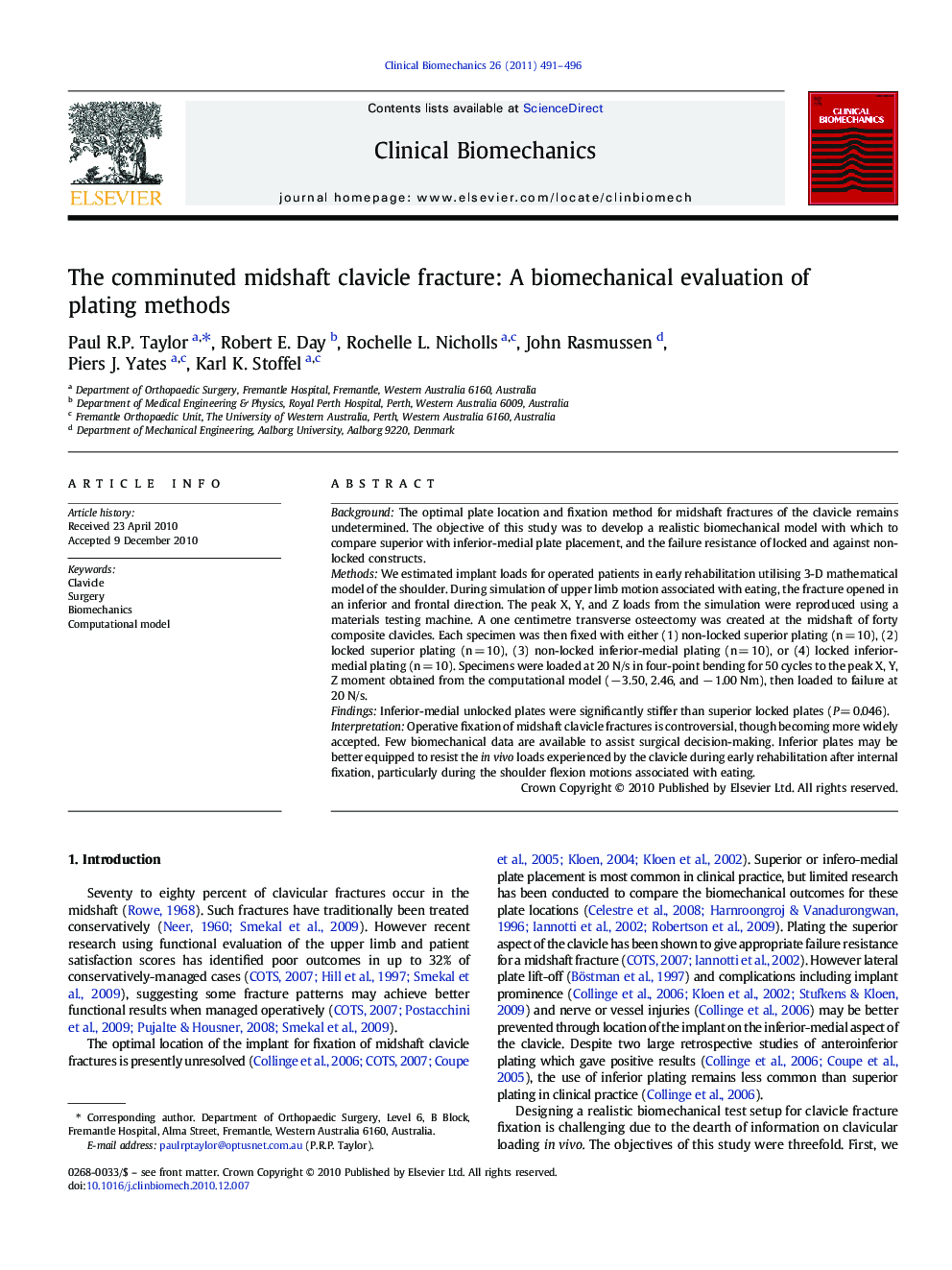| Article ID | Journal | Published Year | Pages | File Type |
|---|---|---|---|---|
| 6205088 | Clinical Biomechanics | 2011 | 6 Pages |
BackgroundThe optimal plate location and fixation method for midshaft fractures of the clavicle remains undetermined. The objective of this study was to develop a realistic biomechanical model with which to compare superior with inferior-medial plate placement, and the failure resistance of locked and against non-locked constructs.MethodsWe estimated implant loads for operated patients in early rehabilitation utilising 3-D mathematical model of the shoulder. During simulation of upper limb motion associated with eating, the fracture opened in an inferior and frontal direction. The peak X, Y, and Z loads from the simulation were reproduced using a materials testing machine. A one centimetre transverse osteectomy was created at the midshaft of forty composite clavicles. Each specimen was then fixed with either (1) non-locked superior plating (n = 10), (2) locked superior plating (n = 10), (3) non-locked inferior-medial plating (n = 10), or (4) locked inferior-medial plating (n = 10). Specimens were loaded at 20 N/s in four-point bending for 50 cycles to the peak X, Y, Z moment obtained from the computational model (â 3.50, 2.46, and â 1.00 Nm), then loaded to failure at 20 N/s.FindingsInferior-medial unlocked plates were significantly stiffer than superior locked plates (P = 0.046).InterpretationOperative fixation of midshaft clavicle fractures is controversial, though becoming more widely accepted. Few biomechanical data are available to assist surgical decision-making. Inferior plates may be better equipped to resist the in vivo loads experienced by the clavicle during early rehabilitation after internal fixation, particularly during the shoulder flexion motions associated with eating.
